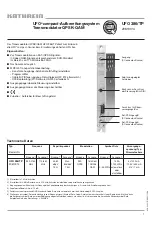
45
Mean Dice Scores
Junior high school
• • • • • • • • • • • • • • • • • • • • • Objective • • • • • • • • • • • • • • • • • • • • •
Use computers as a source of large samples and as a means to simulate events.
Calculate, estimate and use appropriate measures of central tendency with discrete data.
• • • • • • • • • • • • • • • Explanation of the activity • • • • • • • • • • • • • •
Use the calculator to find out the mean score of consecutive rolls of a single die.
While working on this activity, students’ understanding of the mean are reinforced. The
activity also develops students’ understanding of the concept of a limit, within the context of
probability, and emphasizes the importance of experimentation and simulation.
• • • • • • • • • • • • • • • • • Using the calculator • • • • • • • • • • • • • • • • •
Calculator functions used: Random numbers, addition
Let’s use our calculators to find out the mean score if we roll a die
1
0 times.
The mean is calculated by dividing the total score by the number of rolls of the die.
Calculate (4 + 4 +
1
+ 5 + 2 + 3 + 6 + 5 + 4 + 6 )
÷
1
0.
( 4
4
1
...
6 )
1
0
Let’s see what happens to the mean score if we roll
the die 20 times, 50 times, or
1
00 times.
What do you think will happen to the mean score as we continue to roll the dice?
Example 2:
Enter the data using statistics mode.
*You may not get the same results
because random numbers are used.
Example
1
:
Press the following buttons and then start operation.
1
Stat x
DEG
n=
DEG
n=
DEG
n=
DEG
X=
DEG
...
...
...
4
4
6
*
x
(4+4+1+5+2+3
DEG
Содержание EL-531RH
Страница 1: ...SCIENTIFIC CALCULATOR TEACHER S GUIDE JULY 1999 EL 531RH ...
Страница 56: ......











































